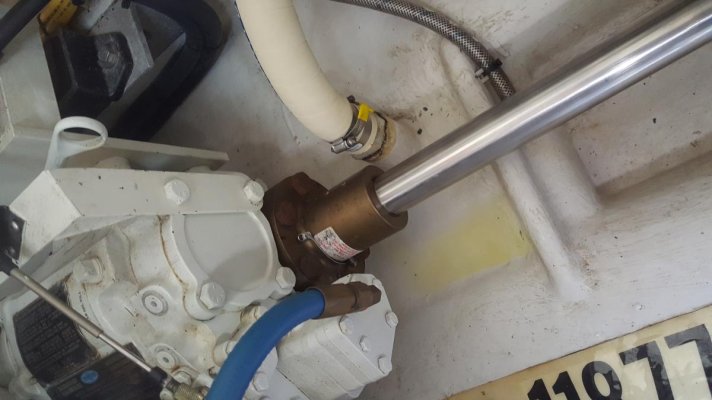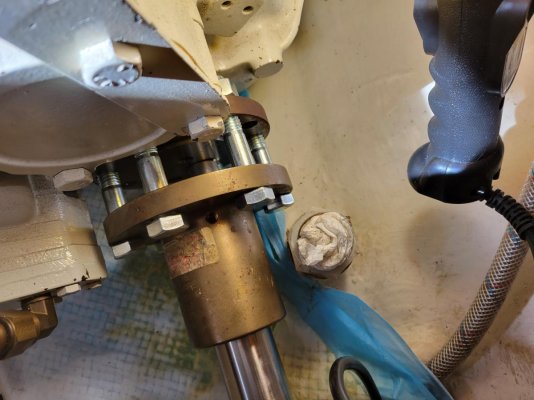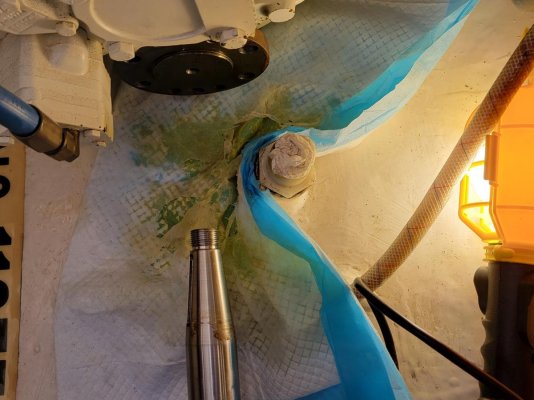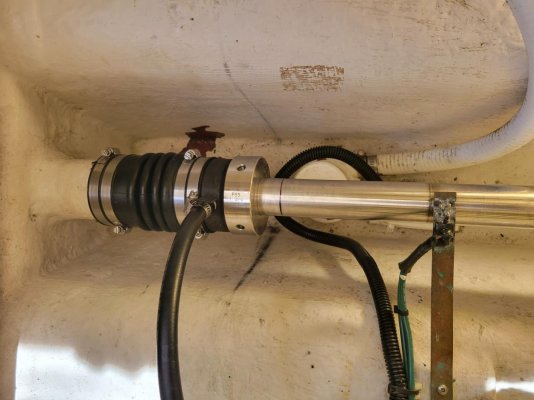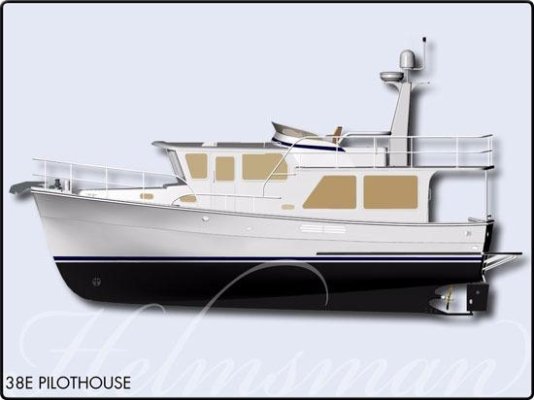The most important skill in close quarters you already have, and that is to go slow. I try never to go faster than I am willing to hit something. The boat seems really large to you right now. I think you will find that it handles pretty well. I owned a 40 foot Carver before that was like a sail in the wind. It didn’t have a bow or stern thruster, but did have two props, which helped in both forward and reverse. The boat seemed overwhelmingly big at first but “shrunk” quickly.
When the Helmsman arrives, my plan will be to practice in calm water until I get a good feel for backing the boat. Having owned several smaller single engine boats should help. We will see how it goes!
If you have access to a prop puller, that could make it a little easier to work on. I would check for any play in the stern tube while I was doing the rest. If you are pulling the boat may as well get that area of the boat completely settled for the next few years. The stuff adds up, but is cheaper to do it as forward maintenance item rather than under duress.
Another area I would look at (it is something I enjoy) is the entire electrical system on the boat. Look for added wiring, check for proper heat shrinking on connections, any melting, scorching, proper wire size, installed with ABYC standards in mind, etc. Look for strain relief, through bulkhead glands, wires in the bilge, etc. if someone has worked on the electrical and there is any old wires that don’t function anymore, I would try to pull them out. Hopefully the boat comes with the original electrical diagram. If so, you can add a new diagram for any additional wiring done since new. Doing so will familiarize yourself with where fusing is, and also wire pulls. Can all be done over time, but I think it is an important safety step, and will provide some peace of mind.
I think you will quickly grow to love the interior space, and the open feel of the salon and pilot house. These boats have a history of high reliability. Breaking the maintenance up into bite sized pieces will reduce the stress levels quite a bit for you, I think. It will take time to learn the boat, but that is part of the fun.


